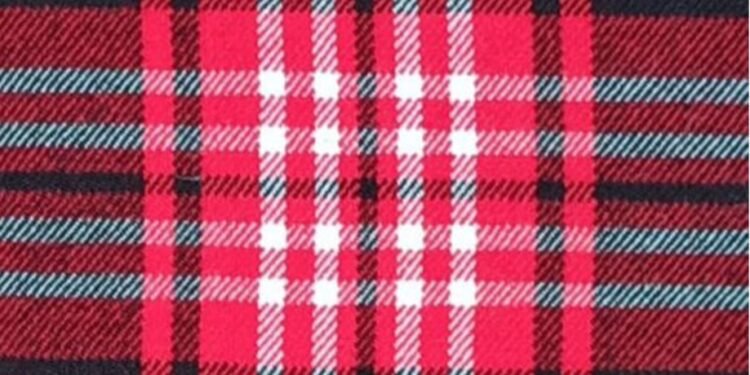The Hawley Tartan, with its rich interplay of colors and traditional patterns, stands as a proud emblem of Scottish heritage and clan identity. Originating from the rugged landscapes of Scotland, this specific tartan is more than just a fabric; it’s a woven narrative of the Hawley clan’s history, values, and enduring legacy. Each thread and hue in the Hawley Tartan tells a story of ancient traditions, battles fought, and community bonds that have been strengthened over centuries. Today, the Hawley Tartan continues to be celebrated and worn, not only in Scotland but around the world, symbolizing a connection to Scottish culture that is both timeless and profound.

Contents
- 1 The Historical Roots of Hawley Tartan
- 1.1 Related posts
- 1.2 5 Different Types of Traditional Pakistani Clothing
- 1.3 How Can Feelingirl Tummy Shapewear Help You Achieve Your Dream Physique?
- 1.4 Welcome to Carsicko: Your Ultimate Destination for Premium Streetwear
- 1.5 Top Trends Featuring Carmichael Clan Tartan in 2024
- 1.6 Hot Trends in 2024: Why Vintage Fashion is Making a Major Comeback
- 1.7 Finding the Perfect Lederhosen Outfit for Oktoberfest Clothing
- 1.8 Discover the Top Kilt Trends for 2024 – A Scottish Fashion Guide
- 2 Cultural Significance and Clan Symbols
- 3 Preservation Through Craftsmanship
- 4 The Role in Modern Scottish Identity
- 5 The Rich Heritage of Tartans
- 6 Fashion and Global Appeal
- 7 Educational Outreach and Digital Archiving
- 8 Conclusion
- 9 FAQs
The Historical Roots of Hawley Tartan
The origins of the Hawley Tartan trace back to the Scottish Highlands, where tartans were traditionally used as a form of identification. Like most tartans, the Hawley pattern is interwoven with the history of its clan. The Hawley family, originally hailing from the borders of Scotland, was known for their roles in local governance and military prowess. Historically, tartans were part of the everyday wear of the Highlanders. The specific colors and patterns helped identify individuals at a distance, useful in a landscape of clan alliances and conflicts. The Hawley Tartan, with its distinct blue and green crisscrossed by red, was a symbol of the clan’s identity, worn proudly by its members during gatherings and battles.
Cultural Significance and Clan Symbols
Tartans are more than just patterns; they are a canvas of history painted with the dyes of symbolism. The Hawley Tartan’s colors are deeply symbolic. Blue represents the rivers and lochs that are abundant in Scotland, green symbolizes the rolling hills and forests, and red recalls the blood spilled in defense of the clan’s honor. Each thread in the tartan’s fabric narrates a piece of Scottish history, intertwined with the values and environment of its people. Moreover, the arrangement of colors and lines in the tartan holds a significance that transcends aesthetics. The patterns are aligned in such a way as to reflect the clan’s philosophy and history. The broad bands of blue could denote the strength and constancy of the Hawley clan, while the thinner red lines might symbolize the sharpness and courage of its warriors.
Preservation Through Craftsmanship
The legacy of tartans like the Hawley is preserved through the meticulous art of tartan weaving. This traditional craft involves a deep understanding of the materials and techniques passed down through generations. The weavers who create the Hawley Tartan today are not just artisans; they are custodians of a centuries-old legacy. Preserving the authenticity of the tartan is crucial. This means adhering to traditional weaving methods, using natural dyes, and maintaining the original pattern specifications. By doing so, the tartan remains a true reflection of its historical and cultural origins, ensuring that the legacy is not diluted over time.
The Role in Modern Scottish Identity
Tartans hold a special place in the hearts of Scots worldwide, serving as a tangible connection to their heritage. The Hawley Tartan, like many others, plays a crucial role in cultural ceremonies and gatherings, such as Highland games, weddings, and public celebrations of Scottish history. These events are not just celebrations; they are re-enactments of history, platforms where the past meets the present. Wearing the Hawley Tartan in such contexts is a powerful statement of identity and belonging. It is a way for individuals to honor their ancestors and engage with their heritage in a deeply personal way.

The Rich Heritage of Tartans
Tartans are much more than the patterned fabrics associated with Scottish kilts; they are deeply ingrained symbols of cultural identity and historical significance. Originating from the Scottish Highlands, each tartan represents different clans, families, or regions, distinguished by unique combinations of colored stripes and bands. These patterns are not merely decorative but carry stories and meanings that have been passed down through generations. Traditionally, tartans were used for practical clothing due to their durable woolen material, but today, they have transcended their original uses to become global fashion icons and potent symbols of Scottish heritage. They continue to be celebrated in modern culture through festivals, attire, and even in contemporary interior design, embodying a legacy that connects the past with the present.
Fashion and Global Appeal
In the world of fashion, tartans have transcended their geographical origins to become symbols of style and rebellion. The Hawley Tartan, with its striking colors and bold patterns, has found a place in modern wardrobes around the globe. From kilts to scarves, and even high-fashion accessories, the tartan continues to be a favored motif. Fashion designers often draw on the rich symbolism and history of tartans like the Hawley to create garments that speak of both tradition and modernity. This blend of old and new helps keep the tartan relevant and appealing to a global audience, further cementing its role in the preservation of Scottish traditions.
Educational Outreach and Digital Archiving
The preservation of tartan heritage also extends into the realms of education and digital technology. Institutions dedicated to Scottish history and culture often hold workshops and exhibitions on tartan weaving and its significance. The Hawley Tartan, featured in such programs, becomes a tool for education, allowing people to learn about and connect with Scottish history. Digital archiving plays a crucial role in this preservation effort. Websites and digital databases catalog different tartans, providing information on their history, patterns, and meaning. The Hawley Tartan, like many others, is digitally preserved to ensure that it remains accessible to future generations, regardless of geographical and temporal boundaries.
Conclusion
Its more than just a piece of fabric; it is a vibrant testament to the enduring legacy of Scottish culture. Through its colors and patterns, it tells the story of a clan, a people, and a nation. As it weaves its way through modern fashion, educational initiatives, and cultural ceremonies, the Hawley Tartan remains a symbol of identity and continuity. In every thread lies the spirit of Scotland, preserved and passed on with pride.
FAQs
1. What does the Hawley Tartan represent?
– The Hawley Tartan represents the Hawley clan of Scotland, encapsulating their heritage and identity. The specific colors and patterns of the tartan signify various aspects of the clan’s environment and history, such as the Scottish landscapes and historical battles.
2. How can one identify the authenticity of the Hawley Tartan?
– Authentic Hawley Tartan is characterized by specific patterns and colors that have been passed down through generations. Genuine tartans are often certified and sold by reputable Scottish heritage stores. Additionally, the Scottish Register of Tartans provides details on registered tartans for verification.
3. Can anyone wear the Hawley Tartan, or is it restricted to the clan members?
– While traditionally tartans were worn by clan members to signify their family and regional affiliations, today, anyone can wear the Hawley Tartan. It is commonly worn to show affinity for Scottish culture or to participate in Scottish traditional events.
4. How is the Hawley Tartan used in modern fashion?
– The Hawley Tartan has transcended traditional Scottish attire and is now used in various fashion items such as kilts, ties, scarves, and even incorporated into high-fashion designs. Its bold and vibrant pattern makes it a popular choice for both traditional and contemporary fashion.
5. Where can I learn more about the Hawley Tartan and other Scottish tartans?
– Information about the Hawley Tartan and other tartans can be found through the Scottish Register of Tartans, cultural museums in Scotland, and various educational websites dedicated to Scottish heritage. These resources often offer detailed histories and images of tartans.


















